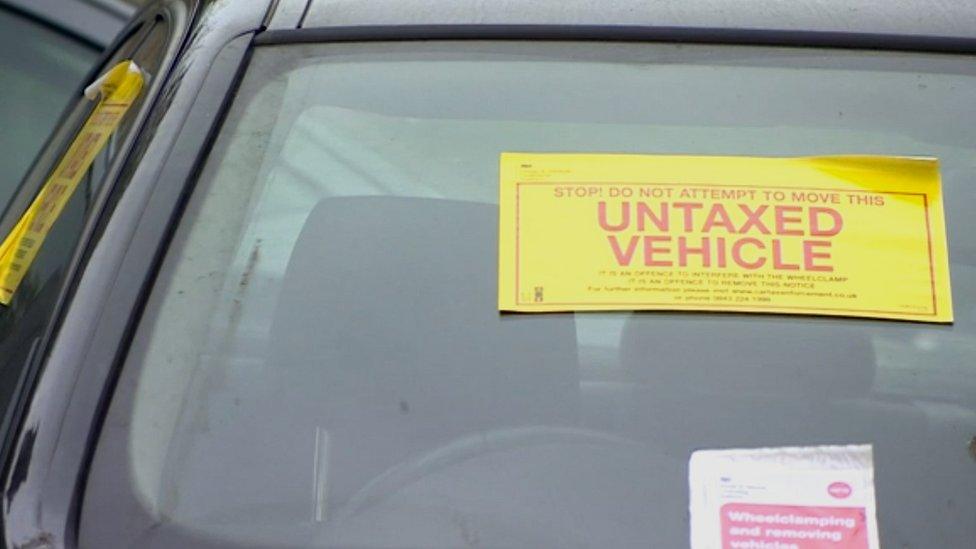Tax disc: Car tax evasion triples after paper version scrapped
- Published
- comments

The number of unlicensed vehicles on the road has tripled since the paper tax disc was abolished, government figures show.
The data, published every two years, shows that the government potentially lost out on ┬Ż107m from 755,000 unlicensed vehicles last year.
The RAC said the decision to get rid of the paper tax disc three years ago has proved "costly".
The measure was meant to have saved the Treasury ┬Ż10m a year, the RAC said.
Figures from the Department for Transport show that 1.8% of vehicles were unlicensed in 2017 compared with 0.6% on 2013.
"The principle of abolishing the tax disc to introduce greater efficiencies has, so far, evidently failed," said RAC public affairs manager Nicholas Lyes.
"It appears that having a visual reminder was an effective way to prompt drivers into renewing their car tax - arguably more drivers are now prepared to try their luck and see if they can get away with not paying any vehicle tax at all, or are simply forgetting to tax their vehicle when they are due to."
When the abolition of the paper tax disc was announced by then-Chancellor, George Osborne, the Treasury said it showed government was moving "into the modern age".
Officials said the disc, introduced in 1921, was no longer needed with the DVLA and police relying on an electronic register.
However, there is clear evidence that it has led to confusion, mistakes or open flouting of the rules by drivers.
The RAC said a third of untaxed vehicles had changed hands since September 2016, indicating that many drivers were not aware that tax does not carry over when ownership changes.
The DVLA also said that it was running a campaign warning the rising number of people still driving cars that had been declared as off the road to tax their vehicles.
The seller receives a refund of any full months of remaining tax while the new owner must tax the vehicle immediately.
Regional breakdown
Just over half had been unlicensed for two months or less, suggesting some of these drivers had forgotten about their renewal date, although reminders are sent before the expiry date by the DVLA.
The highest levels of evasion were in the West Midlands (2.1% of vehicles) and the North West of England (2%).
The East of England had the lowest rate at 0.8%, with all other areas ranging between 1.6% and 1.8%.
These results are based on where vehicles were seen in traffic by enforcement officers or cameras, not where they are registered.
- Published5 December 2013
- Published13 March 2017
- Published21 December 2016